Propagating a Christmas cactus is a rewarding way to grow new plants from cuttings. In this guide, you’ll learn how to propagate Christmas cactus by taking healthy cuttings, allowing them to callous, and rooting them in either soil or water.
By following these steps, you’ll be able to successfully multiply your Christmas cactus collection.
Choosing the Right Time for Propagation
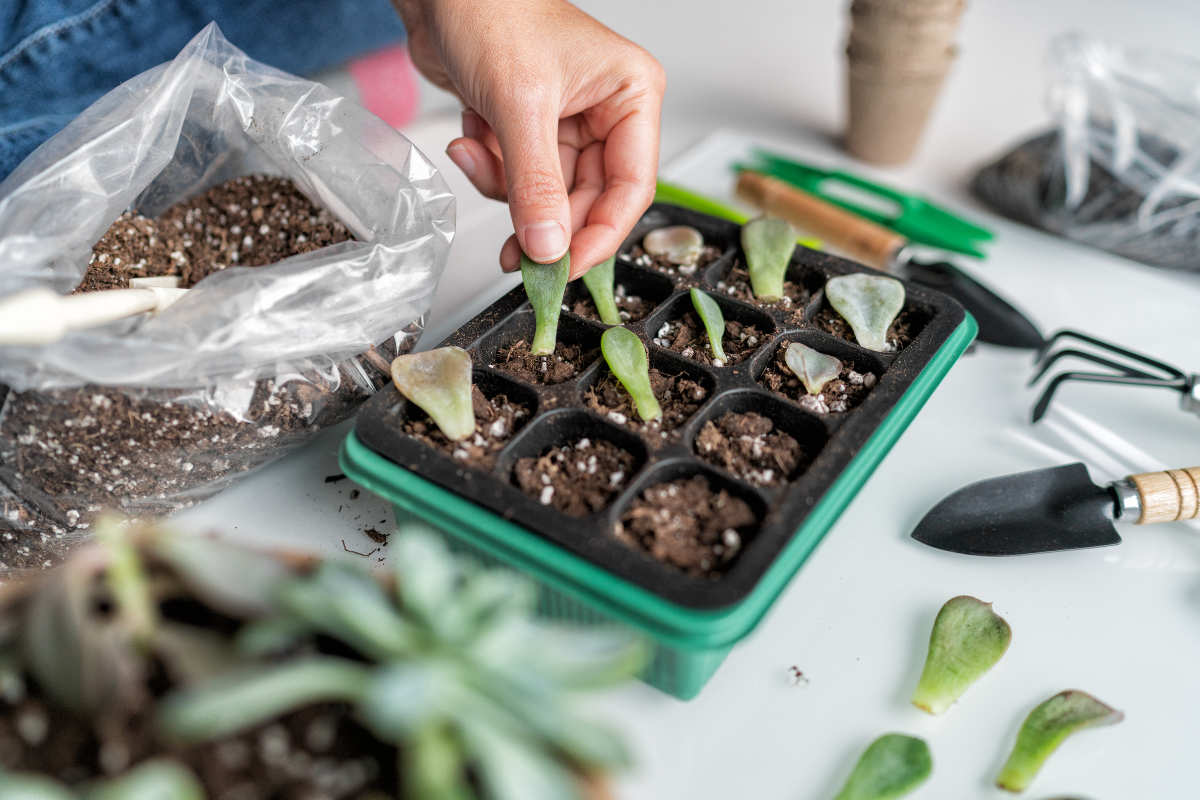
Timing is everything when it comes to propagating Christmas cactus. Choosing the right time can significantly enhance your success rate.
The optimal period for propagation is from late spring to early summer, right after the cactus has finished blooming. This timing ensures that the plant is in its active growing phase, making it more likely to produce healthy new roots. Just like planning your holiday decor, such as exploring Christmas nail design ideas on sites like Olivia Wendel, timing is key to achieving the best results.
Selecting the post-blooming period allows Christmas cactus cuttings to thrive. This timing lets the parent plant recover and gather strength, ensuring robust and healthy cuttings.
Mark your calendars for late spring to early summer to start propagating!
Preparing Christmas Cactus Cuttings

The foundation of successful grow christmas cactus propagation lies in preparing your cuttings correctly. Healthy, well-prepared cuttings are more likely to root and grow into strong plants. The process involves selecting healthy segments from the parent plant and ensuring they are ready for planting.
Next, we’ll cover how to select the right cuttings and the importance of letting them callous.
Selecting Healthy Cuttings
When it comes to selecting Christmas cactus cuttings, health is paramount. Choose cuttings from mature and vigorous stems, ensuring they are free from any signs of disease or damage. Ideally, each cutting should consist of three to four segments, which will give your new plants a strong start. For best results, aim for short, Y-shaped cuttings from the stem tip, as these are the most likely to root successfully.
Gently twist off the stem at the base of a Y-shaped segment using your fingers. This preserves the health of both the parent plant and the cuttings.
Select several cuttings to increase your chances of success, using only healthy foliage.
Letting Cuttings Callous
After taking the cuttings, allow them to callous. This drying process forms a protective layer over the cut end, helping prevent rot or disease. Let the cuttings dry for at least 24 hours, or up to four days for better results.
Callousing minimizes the risk of fungal infections, a common issue with fresh cuttings. Ensure the cuttings are in a dry, well-ventilated area during this time.
After callousing, the cuttings are ready for planting!
Propagating Christmas Cactus in Soil
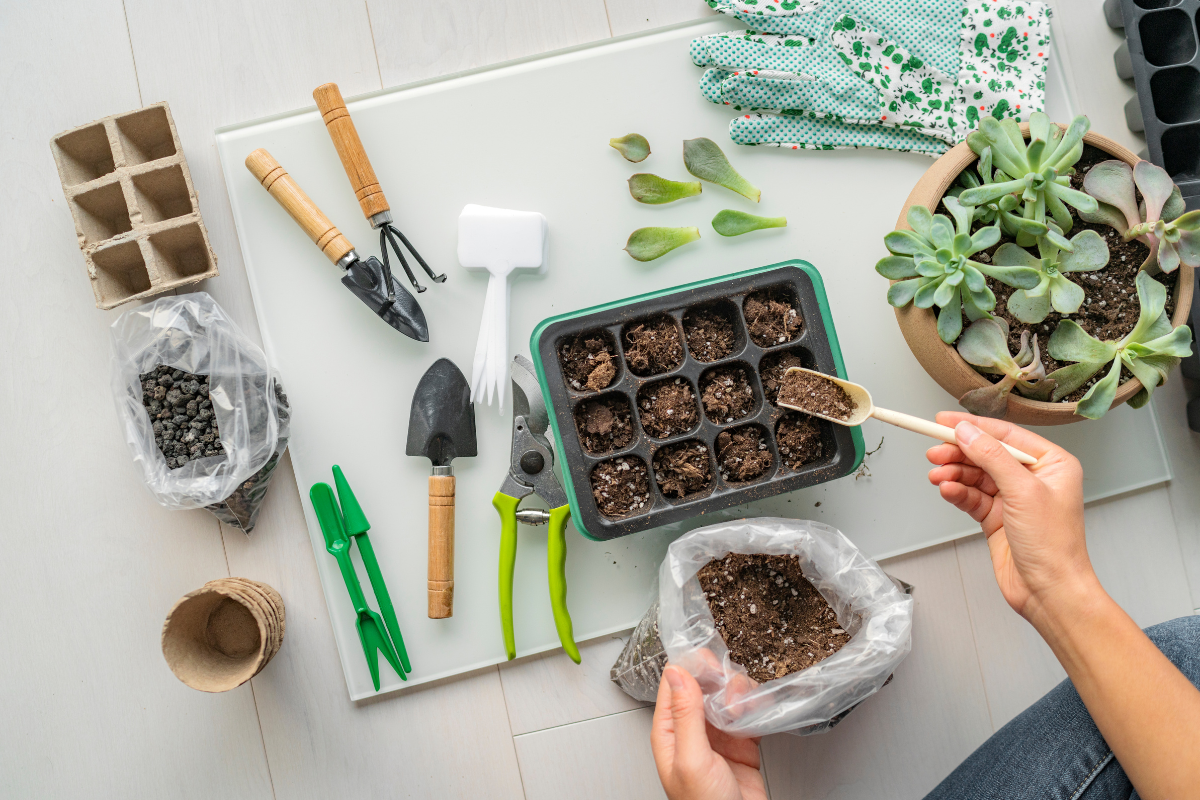
Propagating Christmas cactus in soil is a straightforward and reliable method. It involves planting the calloused cuttings directly into a suitable potting mix and providing the right conditions to propagate christmas cactus for them to root and grow.
The following subsections will guide you through the planting process and how to ensure your cuttings establish strong roots.
Planting Cuttings in Soil
After letting the cuttings callous for two to four days, prepare a lightweight, free-draining soil mix. Insert the cutting about a quarter of its length into the soil, ensuring the Y-shaped stem segment is half buried for optimal rooting stem cuttings.
Space the cuttings about one inch apart to allow for proper growth and prevent overcrowding. Use a pot with drainage holes to prevent water accumulation, which can lead to rot. It’s important to maintain good drainage to keep the cuttings healthy.
Refrain from watering the cuttings for the first one to two weeks to avoid over-saturation. Rooting takes about six to eight weeks; be patient and let the cuttings develop naturally. With proper care, new roots and growth will appear.
Ensuring Proper Conditions
Place the cuttings in a warm spot with bright, indirect light to encourage rooting. Avoid direct sunlight, which can scorch the cuttings.
Keep the soil evenly moist but not soaking. Let the top inch of soil dry out between waterings to maintain the proper moisture levels. Initially, water sparingly to avoid overwatering, which can lead to rot.
Maintaining the right light, warmth, and moisture balance ensures your Christmas cactus cuttings thrive.
Propagating Christmas Cactus in Water

Water propagation is an effective and visually rewarding method, allowing you to watch the root development process.
It’s a popular choice for many gardeners because it provides clear visual feedback and is easy to monitor.
Rooting Cuttings in Water
To start, select cuttings that are 2 to 5 leaf segments long. Place the cuttings in a jar with about one inch of water, ensuring the cut end is submerged. This setup encourages the cuttings to absorb moisture and promote root growth.
Over the next few weeks, you’ll notice roots starting to form. Typically, it takes about six to eight weeks for the cuttings to develop a robust root system in water. Watching the roots sprout during water propagation provides immediate feedback on the progress of your cuttings.
Change the water regularly to keep it fresh and prevent stagnation, maintaining a healthy environment for root development.
Transferring Rooted Cuttings to Soil
Transfer cuttings with roots about one inch long to soil. Use a well-draining mix to ensure proper growth and prevent waterlogging, placing the cuttings about one inch deep.
Keep the soil evenly moist for the first one to two weeks after transferring to help establish their growth. Avoid overwatering during this initial period, as the new roots are still delicate and can easily rot.
With proper care, your water-propagated cuttings will continue to thrive in their new soil environment.
Caring for New Christmas Cactus Plants
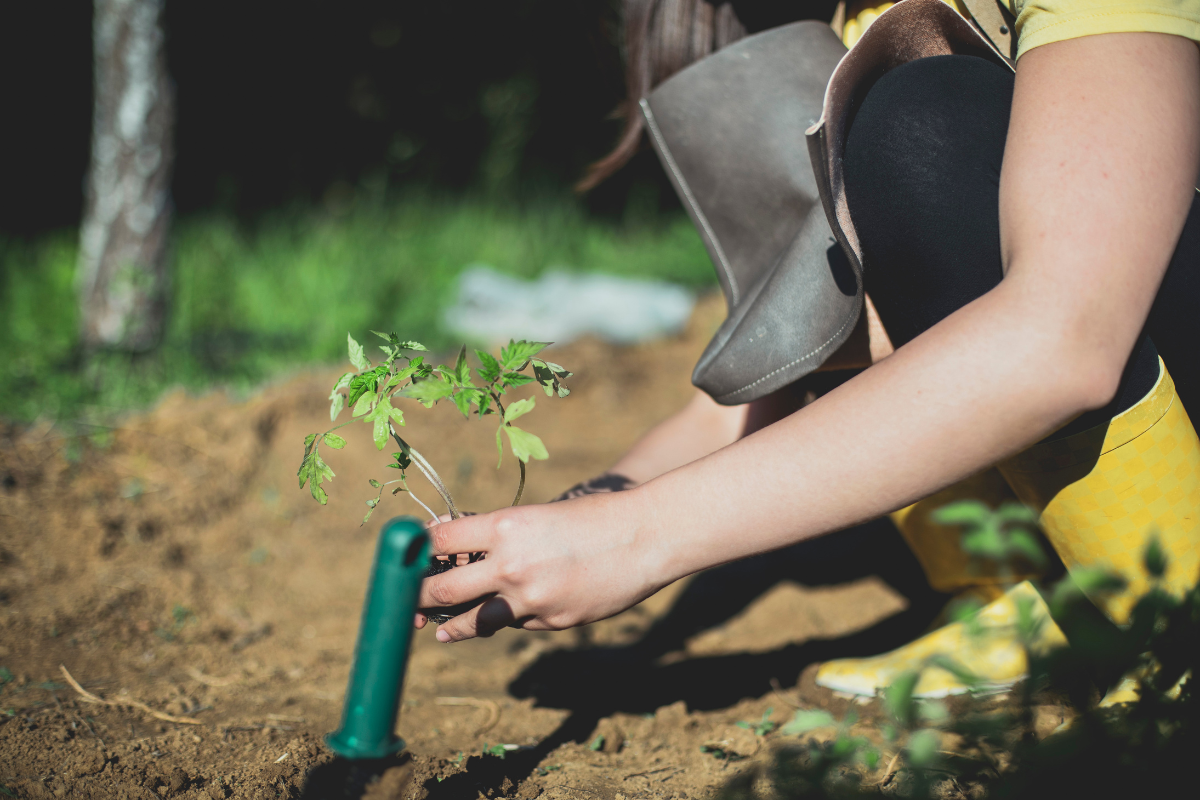
Now that your cuttings have been successfully propagated, it’s time to focus on their ongoing care. Watering, light, fertilization, and repotting are crucial for the health and growth of new Christmas cactus plants.
The next sections offer detailed guidance on these essential care aspects.
Watering and Light Requirements
Water your Christmas cactus when the top inch of soil is dry. Keep the soil evenly moist but not overly saturated, especially after transferring to soil.
Bright, indirect light is crucial for growth and blooming. Place the growing christmas cactus in a spot with bright but indirect light, avoiding direct sunlight to prevent leaf scorching. Warm and moist conditions help new plants establish strong roots.
Fertilization and Repotting
Fertilize your Christmas cactus every two weeks during the spring and summer growing seasons using a balanced, water-soluble fertilizer at half strength. This will provide the necessary nutrients for optimal growth and blooming.
Regular repotting is vital for the health of your Christmas cactus. As the plant outgrows its pot, it needs more space to thrive. Repot every two to three years, or when roots become crowded, to ensure adequate room for growth.
Common Issues and Troubleshooting
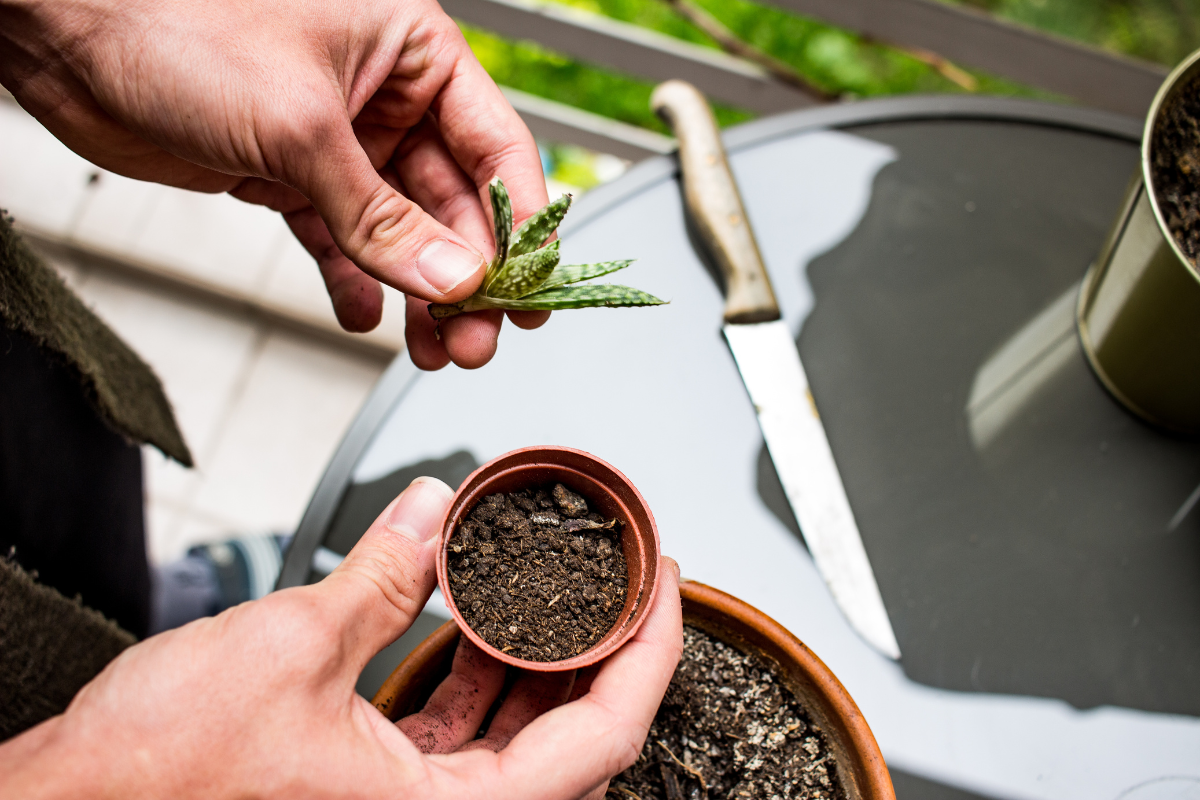
Even with excellent care, common issues may arise while propagating Christmas cactus. Addressing these problems promptly can significantly improve your propagation success.
The next sections will offer solutions for preventing rot and disease and encouraging stubborn cuttings to root.
Preventing Rot and Disease
Root rot is a common issue that arises from overwatering, not neglect. Ensuring adequate drainage is crucial to prevent this problem during propagation. If you notice signs of root rot, such as yellowing leaves or a foul smell, remove the plant from its pot, trim away the damaged roots, and allow the remaining roots to dry in a warm area before replanting.
Maintain good air circulation around the cuttings to avoid fungal infections by reducing humidity and preventing mold or mildew. Regularly check for signs of disease and take immediate action if any issues arise.
Encouraging Stubborn Cuttings
If cuttings are slow to root, place them in a warmer, humid environment to stimulate growth. Using a mini greenhouse or a plastic bag can create the needed humidity.
Check the soil moisture level to determine if adjustments are needed. Sometimes, adjusting the watering schedule or relocating to a brighter spot can improve rooting success.
Benefits of Propagating Christmas Cactus
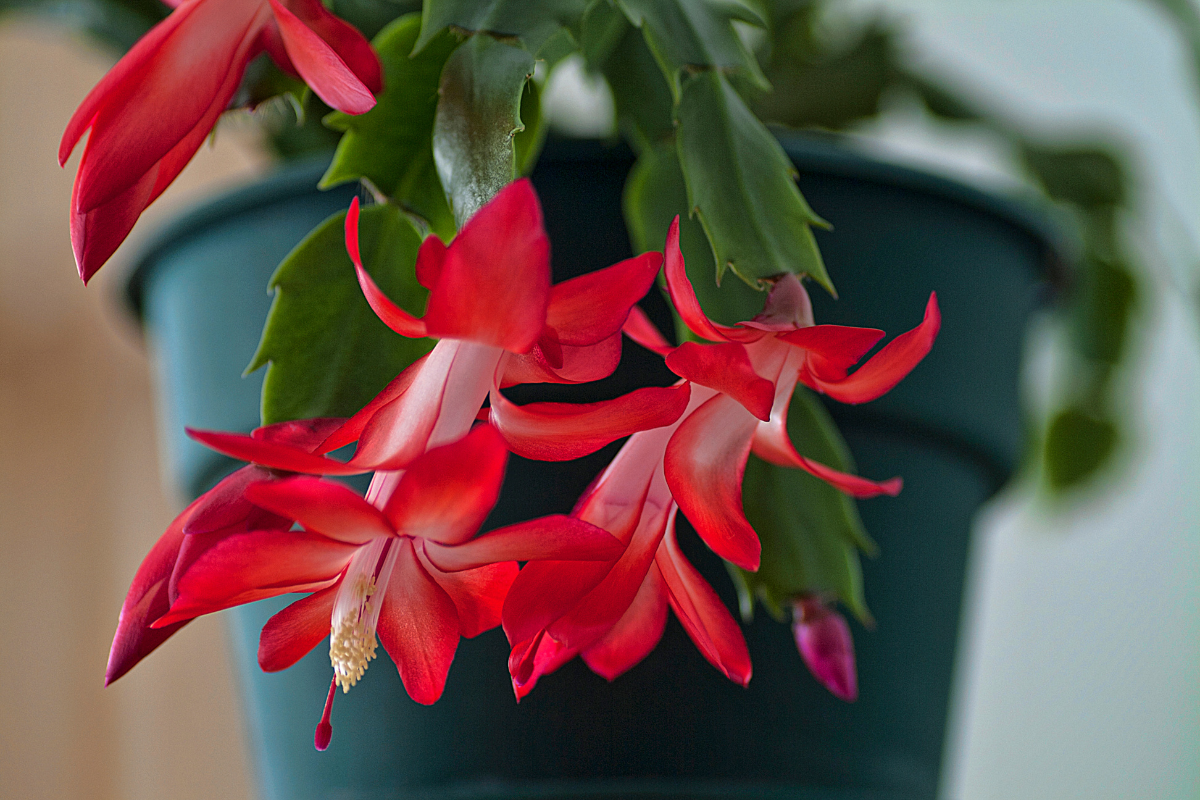
Propagating Christmas cactus offers many benefits, such as expanding your collection of christmas cacti without buying new plants, making it budget-friendly. Sharing propagated plants with friends and family spreads joy and fosters gardening connections, especially when it includes a holiday cactus.
Additionally, propagation can help rejuvenate older plants by encouraging fresh growth. Propagating with leftover stem cuttings from pruning reduces waste and adds to your collection. Overall, it enhances your home decor and provides perfect gifts for loved ones.
Summary
In conclusion, propagating Christmas cactus from cuttings is a rewarding and cost-effective way to grow new plants. By following the steps outlined in this guide, you can successfully propagate your Christmas cactus and enjoy its beauty for years to come.
Whether you choose soil or water propagation, proper care and attention to detail will ensure your cuttings thrive. So, why not give it a try and start your propagation journey today?
Frequently Asked Questions
When is the best time to propagate a Christmas cactus?
The best time to propagate a Christmas cactus is from late spring to early summer, right after its blooming period. This ensures the cuttings root successfully during the plant's active growing phase.
How do I prepare Christmas cactus cuttings for propagation?
To prepare your Christmas cactus cuttings for propagation, choose healthy stems with three to four segments, then let them dry and callous for 24 hours to avoid rotting before planting. This will set you up for success!
Should I propagate Christmas cactus cuttings in soil or water?
You can propagate Christmas cactus cuttings in either soil or water; both methods work well. If you prefer to see the roots develop, go with water, but for a more traditional approach, plant them in well-draining soil.
How often should I water my newly propagated Christmas cactus cuttings?
Water your newly propagated Christmas cactus cuttings sparingly until roots develop, then only when the top inch of soil is dry. For those in water, make sure to change it regularly and keep them in bright, indirect light.
What should I do if my Christmas cactus cuttings are not rooting?
If your Christmas cactus cuttings aren't rooting, try placing them in a warm, humid spot and make sure the soil is kept moist. Adjusting the environment can really help with rooting success!

































































































